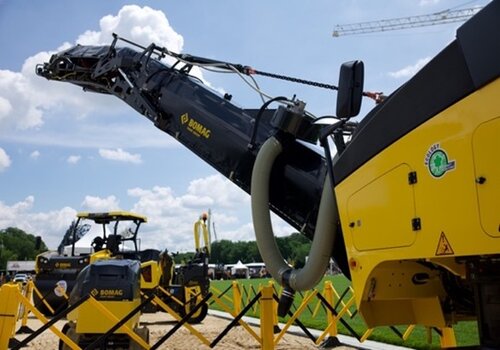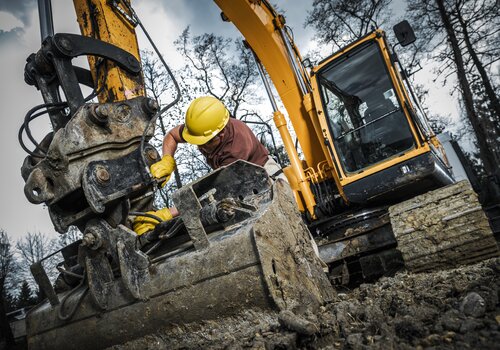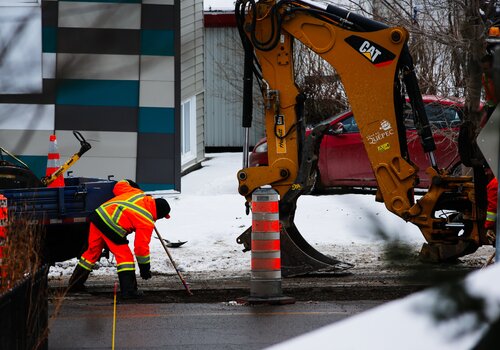Construction companies often use Global positioning system (GPS) for positioning, measuring and machine control. Surveyors use it for stake grades; drones measure stockpiles; machine operators use it combined with building information modeling (BIM) designs to automate some machine applications.
When GPS performs optimally, contractors can rely on the data for making decisions about the construction project. When GPS isn’t working well; it can stop a project in its tracks.
It’s important to be able to quickly figure out why GPS stops working on a job site. According to Geoffrey Kirk, Systems Integration, Trimble, a lot of GPS problems have nothing to do with the GPS equipment.
Tip #1: Change the location of the base station
The base station listens to the 20-30+ satellites to determine location. If it is located where there are physical interferences between the satellites and the base station, this will interfere with the signals coming from these satellites. When you lose reception from enough satellites, the base station won’t be able to determine an accurate location.
The rover position is calculated using information from the base station, so issues at the base directly impact the machine (rover) performance. For this reason, GPS isn’t well-suited for indoor, underground and tunnel work.
This problem can be fixed by choosing a location where there are no obstructions between the base station and the sky.
GPS accuracy also diminishes the farther away a base station is located.
“You can use a base station up to 30 km (20 miles) away, but accuracy decreases the farther you are away from it,” says Kirk. “GPS has an accuracy rating of 15 millimeters plus one part per milliton; this is an industry standard. Every kilometre you move away from the base station, the error grows by one millimeter, so a base station 30 miles away will be inaccurate by up to three centimetres (1.2 inches) more than if you were close to the base station
This problem can be solved by working much closer to the base station.
Moving the base station location can also cause your GPS to have errors.
“When you move the base station, all the data will be off by the distance moved,” says Kirk. “I visited a customer to solve their GPS issues. A T-shaped construction contained the GPS unit and the radio—the GPS on one side of the T and the radio on the other side. We discovered individuals were removing the GPS and radio from the T-shaped housing unit and then putting each one into the opposite spot from which they removed them, and this is what was causing their GPS issues.”
So, each day make sure the base station stays in one location during the entire construction process.
Tip #2: Check your radio frequency
“Radio is probably the cause of most people’s GPS problems.
GPS data can be transmitted on either a 450 MHz or a 900 MHz radio signal. The 450 MHz has a limited amount of bandwidth, so you could be sharing a frequency with someone else and this will effect the GPS data. This is especially true in urban areas. So, you need a frequency no one nearby is using in order to eliminate interference. The 900 MHz has more bandwidth so it is more free from interference from other users, but it also has a more limited range.
Both systems are susceptible to jamming problems, the 450MHz more so. In either case, it’s not the radio signal that is getting jammed, but the GNSS.
Jamming can be caused by either a device whose purpose is to jam GNSS or it can come from devices or objects that happen to jam GNSS.
“One of our customers discovered the telematics device on the machine was jamming the GPS,” says Kirk. “Another time, we discovered a customer’s signal was being jammed by a mechanical shop that was using welders. In other cases, people are using illegal GPS privacy devices; we’ve seen an increase in the use of those since the pandemic.”
In the first case, simply moving the telematics hardware to the rear of the machine helped, since power of devices to jam radio signals diminishes the farther away the jamming device is from the GPS. In the second and third cases, not much can be done.
When radio signals are being jammed, you can switch to transmitting via a cell phone signal.
“Cell phones don’t experience jamming problems and they don’t have range issues, but the signal can be weak and they can get overloaded, especially at peak use times,” says Kirk. “Using UHF radios, data travels from the base station to the rover in less than one second; using a cell phone signal normally gets from the base to the rover in less than one second, but can have a time latency of up to five seconds or more in peak load conditions.”
If you must use a cell signal, be aware of the data time delay and of times of day, such as late afternoon, when the signal will likely get overloaded.
Tip #3: Check your construction designs
Automation of construction equipment requires the machine to be fed a design and GPS coordinates. The design tells the machine what to do and the GPS tells it where to do it.
Oftentimes, when a customer’s machine that is equipped with machine control builds something incorrectly, it’s because there was an error in the design—not the GPS.
“When your machine is building something you don’t want; it’s probably an error in the design,” says Kirk. “Check your designs before putting the machine in the field.”
Also, the machine uses its own data and the GPS data from the base station for positioning itself. If the data from the machine is good but the data from the base station is poor, your data will be also be poor.












